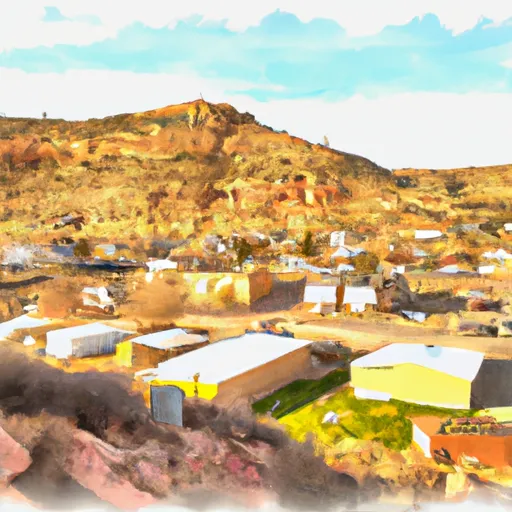-
 Snoflo Premium
Snoflo Premium
Get unlimited access to all our content
With no Ad interruptions! - Start Your Free Trial Login with existing account
Gunlock
Eden Index
Climate
8.9
•
Recreation
5.9
•
Community
•
Safeguard
5.6/10

Gunlock, Utah is a small town located in Washington County with a population of just over 500 people. The climate in Gunlock is characterized by hot summers and mild winters, with an average temperature of 69°F. The town is home to the Gunlock Reservoir, a popular spot for fishing and boating. The water in the reservoir contains hydrology constituents such as calcium, sodium, and magnesium. Outdoor recreation opportunities in Gunlock include hiking, camping, and rock climbing in nearby areas such as Snow Canyon State Park and Red Cliffs National Conservation Area. The town also hosts an annual Gunlock Rodeo, which attracts visitors from all over the area.
What is the Eden Index?
The Snoflo Eden Index serves as a comprehensive rating system for regions, evaluating their desirability through a holistic assessment of climate health, outdoor recreation opportunities, and natural disaster risk, acknowledging the profound impact of these factors on livability and well-being.
Climate Health Indicator (CHI): 8.9
Gunlock receives approximately
285mm of rain per year,
with humidity levels near 52%
and air temperatures averaging around
16°C.
Gunlock has a plant hardyness factor of
8, meaning
plants and agriculture in this region tend to thrive here all year round.
By considering the ideal temperature range, reliable water supplies, clean air, and stable seasonal rain or snowpacks, the Climate Health Indicator (CHI) underscores the significance of a healthy climate as the foundation for quality living.
A healthy climate is paramount for ensuring a high quality of life and livability in a region, fostering both physical well-being and environmental harmony. This can be characterized by ideal temperatures, reliable access to water supplies, clean air, and consistent seasonal rain or snowpacks.
Weather Forecast
Streamflow Conditions
Lower Colorado-Lake Mead
Area Rivers
Lower Colorado-Lake Mead
Snowpack Depths
Lower Colorado-Lake Mead
Reservoir Storage Capacity
Lower Colorado-Lake Mead
Groundwater Levels
Recreational Opportunity Index (ROI): 5.9
The Recreational Opportunity Index (ROI) recognizes the value of outdoor recreational options, such as parks, hiking trails, camping sites, and fishing spots, while acknowledging that climate plays a pivotal role in ensuring the comfort and consistency of these experiences.
Access to outdoor recreational opportunities, encompassing activities such as parks, hiking, camping, and fishing, is crucial for overall well-being, and the climate plays a pivotal role in enabling and enhancing these experiences, ensuring that individuals can engage in nature-based activities comfortably and consistently.
Camping Areas
| Campground | Campsites | Reservations | Toilets | Showers | Elevation |
|---|---|---|---|---|---|
| Virgin River | 75 | 2,256 ft | |||
| Honeycomb Rock | 21 | 5,741 ft | |||
| Baker Dam | 20 | 4,850 ft | |||
| Sand Cove Reservoir Dispersed | None | 4,522 ft | |||
| Snow Canyon State Park | 35 | 3,359 ft | |||
| Gunlock State Park | None | 3,609 ft |
Nearby Fishing
Nearby Ski Areas
Catastrophe Safeguard Index (CSI):
The Catastrophe Safeguard Index (CSI) recognizes that natural disaster risk, encompassing floods, fires, hurricanes, and tornadoes, can drastically affect safety and the overall appeal of an area.
The level of natural disaster risk in a region significantly affects safety and the overall livability, with climate change amplifying these risks by potentially increasing the frequency and intensity of events like floods, fires, hurricanes, and tornadoes, thereby posing substantial challenges to community resilience and well-being.
Community Resilience Indicator (CRI):
The Community Resilience Indicator (CRI) recognizes that education, healthcare, and socioeconomics are crucial to the well-being of a region. The CRI acknowledges the profound impact of these elements on residents' overall quality of life. By evaluating educational resources, healthcare accessibility, and economic inclusivity, the index captures the essential aspects that contribute to a thriving community, fostering resident satisfaction, equity, and social cohesion.

